This Just In - Motorola Droid 3 for Verizon
by Brian Klug on July 15, 2011 8:09 PM ESTAlmost a month ago, we posted about the Motorola Droid 3 popping up in GLBenchmark 2.0's online result browser, with a dual-core 1 GHz OMAP 4430 SoC at its core. Since then, Motorola made the Droid 3 official, announcing online availability for July 7, and in-store availability July 14 for the pretty standard $199.99 on a two year contract. We waited patiently and sure enough a Motorola Droid 3 hit our doorstep today, which we'll have a full review on sometime before the week is up. Until then, we're going to go over high level things in our usual This Just In format.
We're still running all our benchmarks, but for the time being have scores for the web suite, GLBenchmark 2.0, and RightWare's Basemark ES2.0. We now have independent confirmation that those previous Droid 3 results from the GLBench online result browser weren't crazy, in fact, Egypt has gone up slightly.
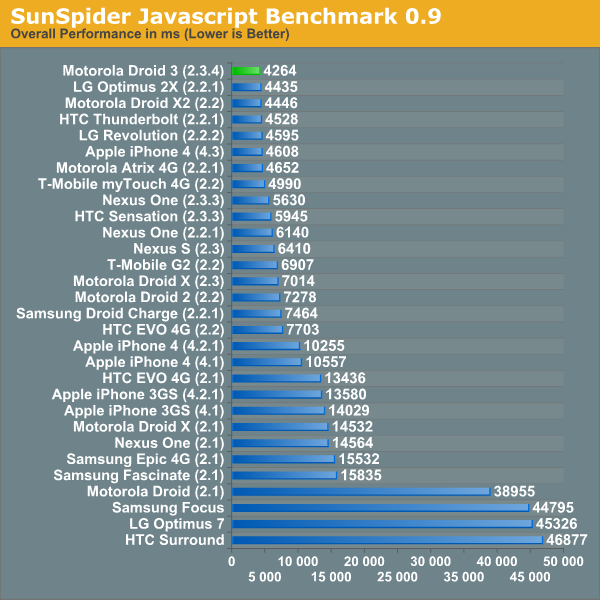

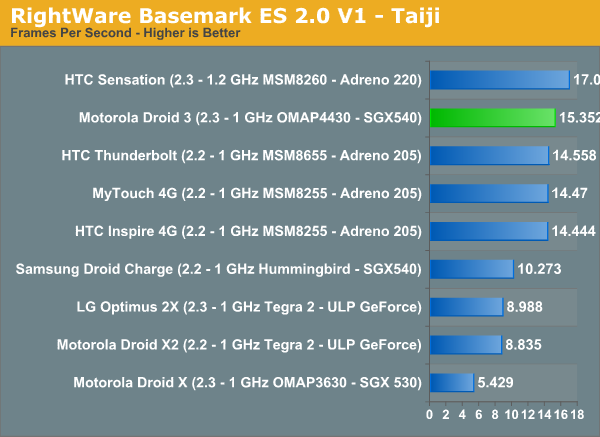
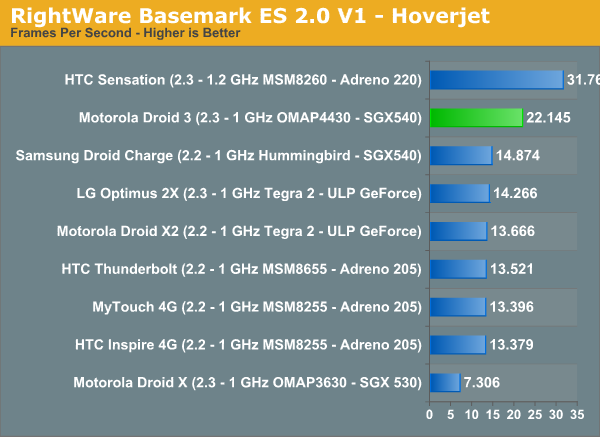
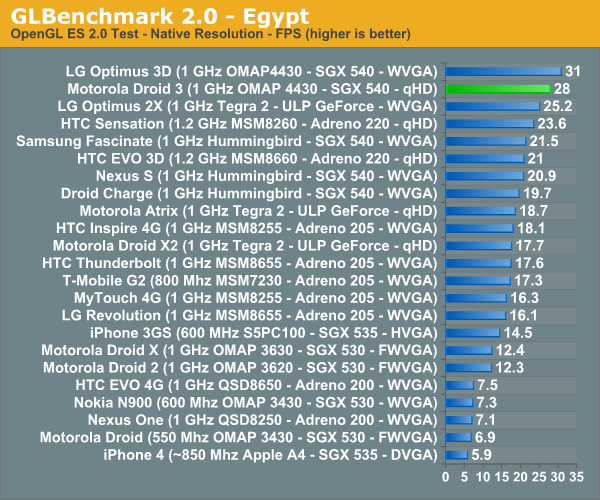
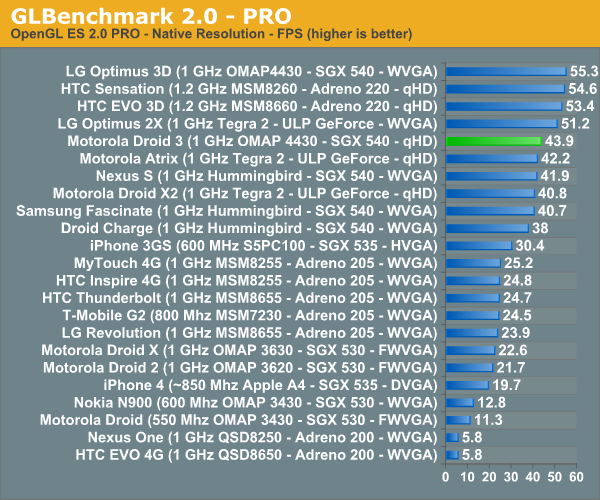
The Droid 3 is a world-branded phone, and thus includes a dual-mode baseband. If you've been following some of Motorola's other devices closely, it shouldn't come as a surprise that Qualcomm's MDM6600 baseband is inside the Droid 3.
There's the standard CDMA2000 1x/EVDO Rev.A 800 / 1900 MHz connectivity for Verizon and some roaming on other CDMA carriers, alongside GSM/UMTS 850 / 900 / 1800 / 1900 support for roaming abroad. There's 2.4 GHz 802.11n support, though no 5 GHz love for 802.11an.
| Motorola Droid 3 - Network Support | |||||
| CDMA2000 1xRTT/EVDO Rev.A | 800 / 1900 MHz | ||||
| GSM/EDGE | 850 / 900 / 1800 / 1900 MHz | ||||
| WCDMA/UMTS | 850 / 1900 / 2100 | ||||
| HSPA Speed | HSDPA 10.2/14.4 (UE Cat. 9/10), HSUPA 5.76 | ||||
| Qualcomm MDM6600 | |||||
The Droid 3 comes running the very latest version of Gingerbread out right now, 2.3.4. It's a breath of fresh air to play with something that isn't launching running 2.2 Froyo for a change. The device is also running the new brand of Motoblur Motorola's UI skin, which includes a new lock screen and some eye candy on the application launcher and home screens. I'm still making my mind up about how this compares to the previous brand of Motoblur that comes with the Droid X2.
The other big change is of course the new five-row QWERTY keyboard, which thus far is honestly spectacular. I picked up the Droid 3 and immediately was speeding along comfortably. The domes are convex, very clicky, and provide great haptic feedback. I have to admit that I initially questioned the wisdom of dedicating an entire row to 0-9, but I completely understand how helpful this is after entering my 20 character WPA PSK and getting the Droid 3 on my WiFi network. Moreover, it provides a nice buffer so fingers and long nails don't hit the bottom of the slider. The slide mechanism still isn't spring loaded or on a particularly smooth rail, however.
The device is also 0.8 mm thinner than the Droid 1 and 2, and it's surprising how much that actually translates to a device that feels like it hasn't put on weight just because it has a keyboard. Check out the gallery for some shots of the sides and all around.
The Droid 3 curiously comes without a microSD card, instead going with 16 GB of internal storage. I was a bit confused at first, but sure enough there's no microSD card mentioned on the box.
There's an 8 MP rear facing camera with LED flash. It's down to one LED instead of two with the Droid 3, but it looks like the LED has an improved fresnel lens atop it, and no doubt more power output. There's also a VGA front facing camera.
The device can capture 1080p30 video at 15 Mbps with stereo audio. I'm not passing judgment quite yet, but things in the lightbox look a bit undersaturated, but there's great high frequency spatial detail. Check out the gallery for some quick pictures I took with the rear facing camera.
Stay tuned for our full review!


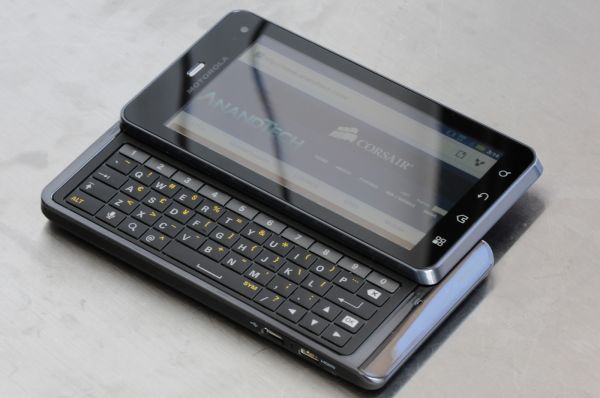
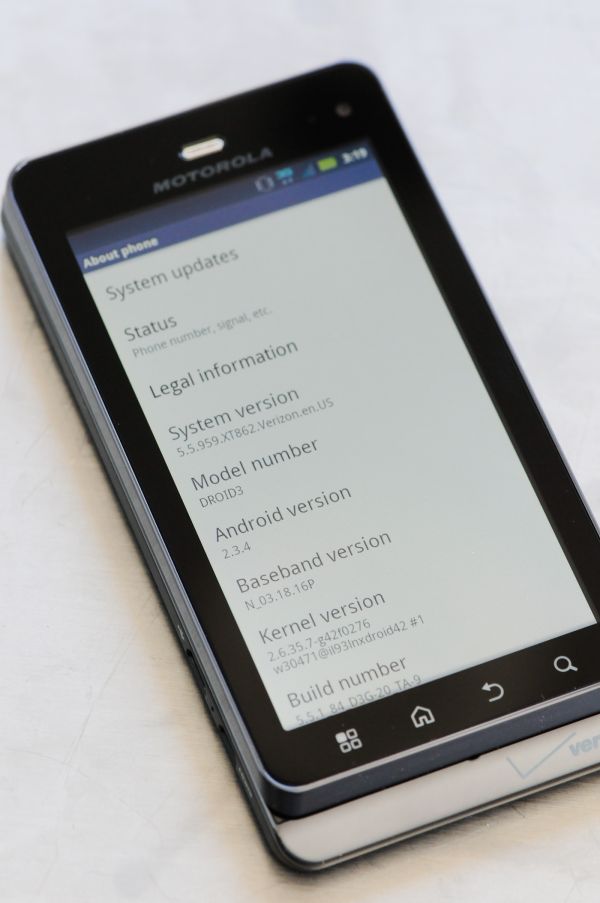
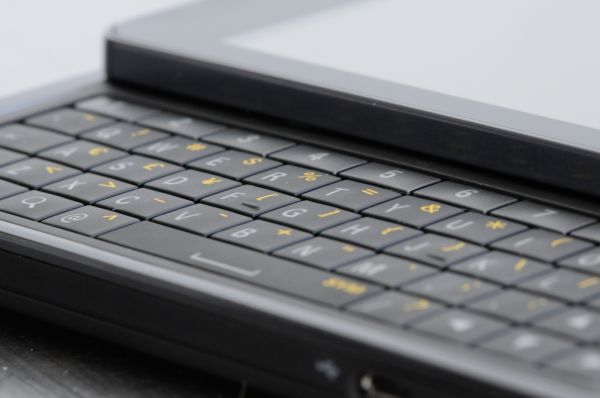






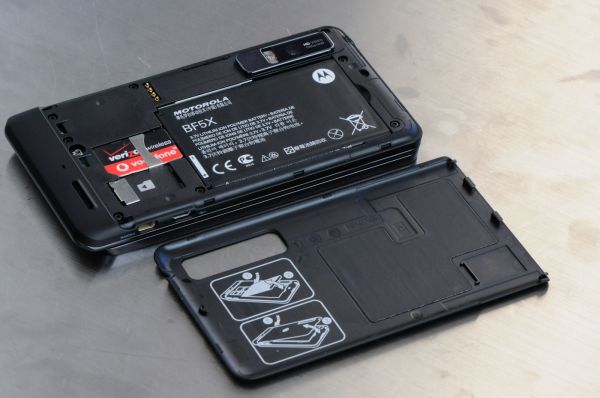















39 Comments
View All Comments
tipoo - Friday, July 15, 2011 - link
I thought that the iPhone 4 did so bad at that particular benchmark just because it has such a high resolution screen and it runs at native resolution, but the qHD screen on the Droid 3 is pretty close and it still wins by an absolute landslide. Any idea if something else is holding the iPhone back?Casper42 - Friday, July 15, 2011 - link
You mean besides Apple? :PStuka87 - Friday, July 15, 2011 - link
qHD is roughly 16% smaller than the iPhone 4's screen res, and the Droid 3 has a better video processor (not sure how much better, but 535 vs 540).But I think it also comes down to software. How well optimized is the GL test on iOS vs Android?
B3an - Saturday, July 16, 2011 - link
"Any idea if something else is holding the iPhone back"Year old hardware + slow single core CPU + dated GPU + tiny amout of RAM + Inferior OS.
Very obvious stuff here, dont know why you're even asking.
AnnonymousCoward - Friday, July 15, 2011 - link
ThanksRoland00 - Friday, July 15, 2011 - link
It is a pure travesty that this phone doesn't have a lte (4g) radio.I also complain about the use of a pentile screen, but that is just being nitpicky.
mlcloud - Friday, July 15, 2011 - link
Add LTE radio:Phone requires more space
Phone drains more battery
To counteract battery life loss:
Add bigger battery.
You'll end up with a thunderbolt with a keyboard. 2 centimeter thick phone =D
kkwst2 - Friday, July 15, 2011 - link
Yes, that should change somewhat once they start using the new chips that have the LTE radio built in.dagamer34 - Saturday, July 16, 2011 - link
Most people would rather have a good 3G phone than a crappy 4G one.cmdrdredd - Saturday, July 16, 2011 - link
I know a good number of people who don't want a 3G phone since 4G is rolling out in so many areas and the speed difference is astronomical.You complain about battery life but really, how many times a day do you have the opportunity to charge your phone? If you're sitting at your computer plug it in. In the car? Plug it in. I'm never away from a charger for more than 8-10 hours and if I'm away that long I am NOT using the phone all the time so the battery lasts plenty long. Anything to complain about new technology.